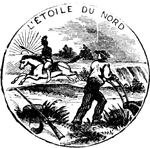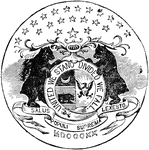Clipart tagged: ‘Minnesota’

Archbishop John Ireland
John Ireland (September 11, 1838 – September 25, 1918) was the third bishop and first archbishop of…

Alexander Ramsey
(1815-1903) U.S. Senator and Governor of Minnesota. He also served as Secretary of War under President…

Second Naval Battle
"Second naval battle in Hampton Roads- fight between the Federal ironclad Monitor, of two guns,…







